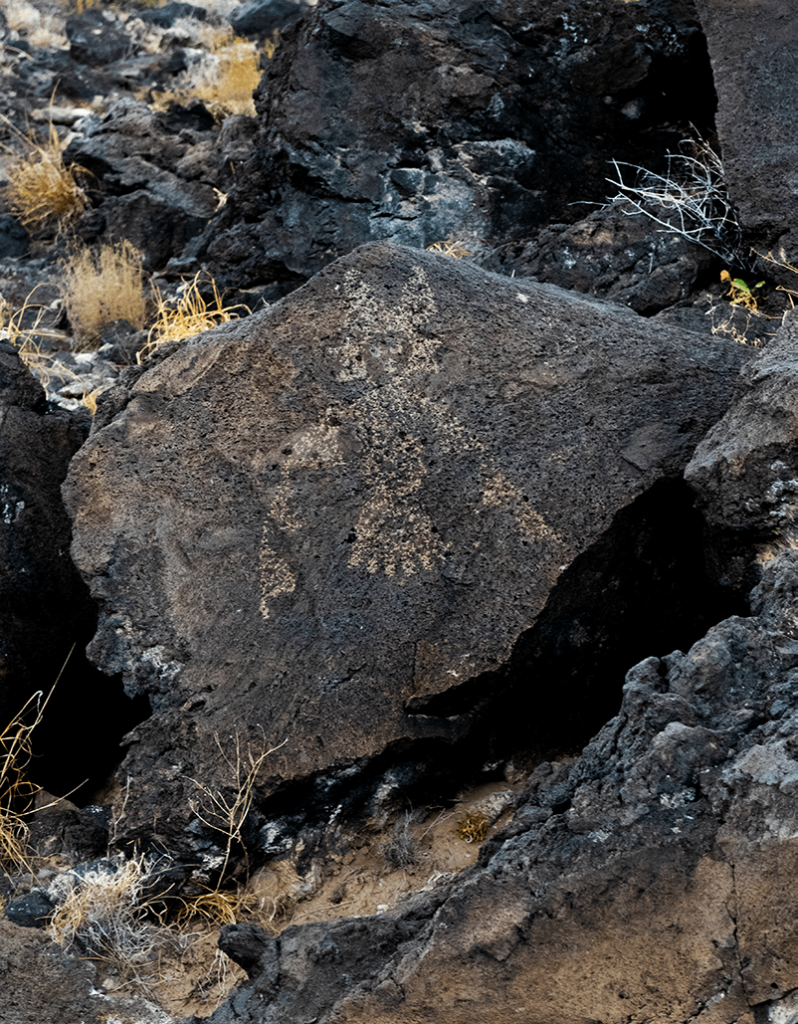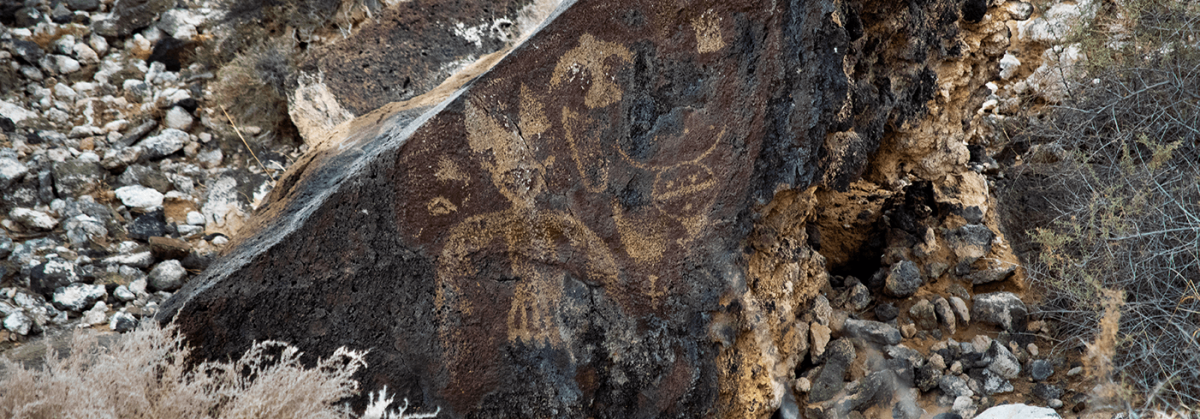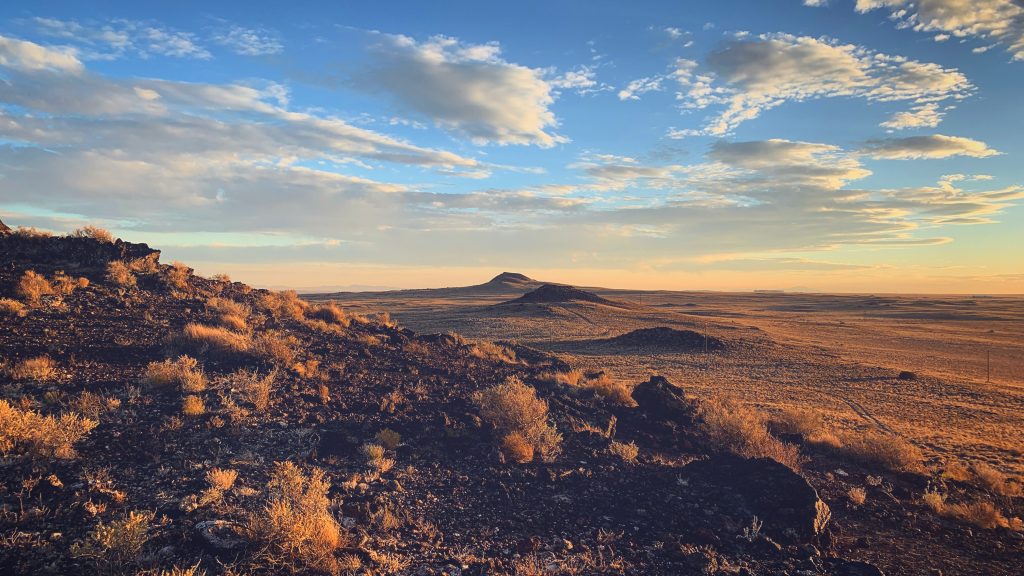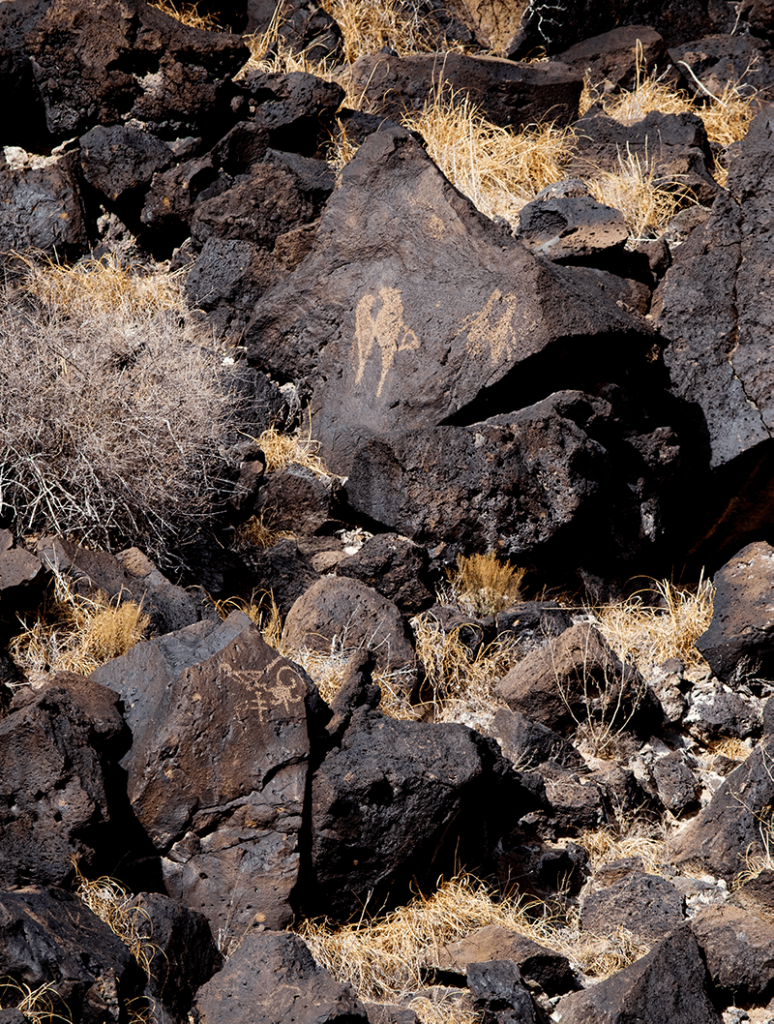The National Petroglyph Monument is a collection of trails in the Northwest of Bernalillo County . These sites were commonly traveled by the pueblo inhabitants in the Albuquereque area. They left messages inscribed on the broken basalt rocks. Archaeologists have determined that many of the symbols represent landmarks, tribal insignia, and perhaps messages.
It is estimated 90% of the monument’s petroglyphs were created by the ancestors of today’s Pueblo people. Puebloans have lived in the Rio Grande Valley since before 500 A.D., but a population increase around 1300 A.D. resulted in numerous new settlements. It is believed that the majority of the petroglyphs were carved from about 1300 through the late 1680s.

The arrival of Spanish people in 1540 had a dramatic impact on the lifestyle of the pueblo people. In 1680 the Pueblo tribes rose up in revolt of Spanish rule, and drove the settlers out of the area and back to El Paso, Texas. In 1692 the Spanish resettled in the Albuquerque area. As a result of their return, there was a renewed influence of the Catholic religion, which discouraged participation by the Puebloans in many of their traditional ceremonial practices. As a consequence, many of these practices went underground, and much of the image making by the Puebloans decreased. A small percentage of the petroglyphs pre-date the Puebloan time period as far back as B.C. 2000.
Why Make A Petroglyph?
There were many reasons for creating the Petroglyphs, most of which are not well understood by modern society. Petroglyphs are more than just “rock art,” picture writing, or an imitation of the natural world. They should not be confused with hieroglyphics, which are symbols used to represent words, nor thought of as ancient Indian graffiti. Petroglyphs are powerful cultural symbols that reflect the complex societies and religions of the surrounding tribes. Petroglyphs are central to the monument’s sacred landscape where traditional ceremonies still take place. The context of each image is extremely important and integral to its meaning. Note each petroglyph’s orientation to the horizon and surrounding images, as well as the landscape in which it sits.
Today’s native people have stated that the placement of each petroglyph image was not a casual or random decision. Some petroglyphs have meanings that are only known to the individuals who made them. Others represent tribal, clan, kiva or society markers. Some are religious entities and others show who came to the area and where they went. Petroglyphs still have contemporary meaning, while the meaning of others is no longer known but are respected for belonging to “those who came before.” While viewing these petroglyph images, please consider their importance to both past and present cultures.



